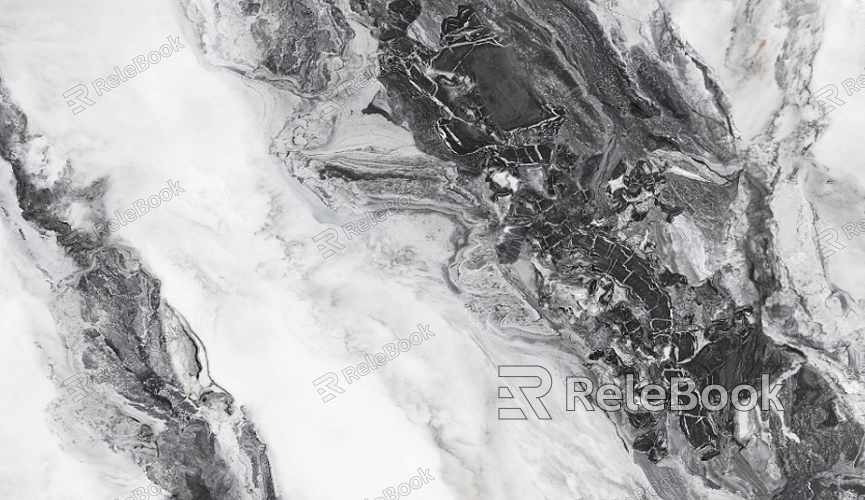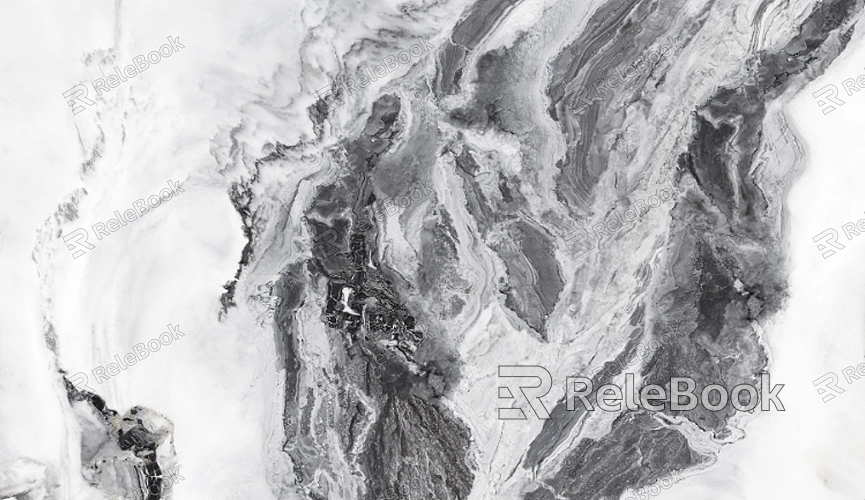How to Create 3D Textures Using Drawing Software?
With the continuous development of digital art and design, 3D textures play a crucial role in modern visual arts. Whether in games, animation, virtual reality, or film production, 3D textures give virtual objects a realistic appearance and detail. Using drawing software to create these textures is a key part of an artist's or designer's daily work. This article will explore how to create 3D textures using drawing software, helping you understand the process and master the essential skills.

Basic Concepts of 3D Textures
3D textures are image files that give a three-dimensional model visual surface details. They can represent surface features like color variations, reflections, wear marks, and more. The key to creating these textures is simulating the appearance of different materials, making them look realistic in the virtual world. Textures must not only align with the geometry of the object but also take into account factors like lighting, shadows, and reflections.
Choosing the Right Drawing Software
To create high-quality 3D textures, selecting the right drawing software is crucial. There are several professional software tools available for 3D texture creation. Below are some commonly used tools.
1. Substance Painter
Substance Painter is one of the most popular 3D texture creation software programs today. It offers a powerful set of tools that allows artists to paint directly on 3D models. With its highly integrated workflow, users can see real-time changes and quickly make adjustments. Substance Painter provides a rich material library and supports dynamic painting and smart material generation, greatly improving workflow efficiency.
2. Photoshop
Adobe Photoshop is a go-to tool for many artists and designers. Although Photoshop was not originally designed for 3D texture creation, its robust drawing and editing capabilities make it an effective tool for creating 3D textures. By utilizing Photoshop’s layers, filters, brushes, and other features, designers can manually draw and edit texture images for 3D models.
3. Blender
Blender is an open-source and free 3D creation tool with powerful features for modeling, sculpting, rendering, and texture painting. Blender's texture painting tools allow users to paint directly on 3D models and simulate various material effects. Furthermore, its robust rendering capabilities allow designers to view final results while creating textures.

The Basic Process of Creating 3D Textures
Creating 3D textures can be a complex process, but once you understand the basic workflow, you’ll be able to successfully create textures that meet your needs. Below are the basic steps involved in creating 3D textures using drawing software.
1. Selecting the Appropriate Base Textures
Before starting to create 3D textures, it’s important to select the appropriate base textures for your model. These textures typically include Diffuse Maps (color textures), Specular Maps (highlight textures), and Normal Maps (bump textures). Each type of texture corresponds to different material properties and helps achieve surface lighting effects, depth, and realism.
2. UV Unwrapping and Mapping
Before painting textures, the 3D model needs to undergo UV unwrapping. UV unwrapping is the process of flattening the 3D surface of the object into a 2D plane, making it easier to draw and map textures. By applying UV mapping, textures can be accurately applied to the surface of the object, ensuring a natural look.
3. Manually Drawing and Modifying Textures
Once the UV unwrapping is complete, you can begin manually drawing the textures. In this process, you can choose different brushes, layers, colors, and material effects to simulate the surface appearance. For example, when creating wood textures, you can use detailed brush strokes to represent the natural curves and gloss of the wood grain. For metal textures, you might focus on simulating reflective shine and minor scratches.
4. Using Procedural Texture Generation
In addition to manual drawing, many drawing software programs also support procedural texture generation. Through algorithms and material templates, the software can automatically generate complex textures like noise, bump effects, or metallic surfaces. Procedural textures save time and ensure consistency and efficiency in the creation process.
5. Adjusting and Optimizing Textures
Once the initial texture is completed, the next step is adjusting and optimizing it. You need to carefully check how the texture looks on the model, ensuring there are no unnatural seams, stretching, or color issues. During this stage, you can optimize the texture by adjusting layer opacity, color balance, and detail intensity to ensure realism and visual appeal.
Enhancing Effects with Texture Maps
In more complex 3D works, a single texture image may not provide enough detail or realism. At this point, various texture mapping techniques can be used to enhance the effects. For example, using normal maps, reflection maps, and ambient light maps can greatly enhance the lighting and surface reflection effects, making the object appear more dynamic and lifelike.
1. Normal Maps
Normal maps adjust the surface normals to simulate bump effects, providing additional detail without increasing the polygon count. Normal maps help add depth and realism, such as the roughness of stones or the scratches on metal surfaces.
2. Reflection Maps
Reflection maps simulate the reflective properties of an object’s surface. By adjusting the reflection map’s intensity and range, you can create more dynamic reflection effects, such as those seen on glass, water, or metal.
3. Ambient Light Maps
Ambient light maps simulate the effects of environmental lighting on an object’s surface. Applying an ambient light map to the surface enhances material realism, especially in darker areas, making details more prominent.
By using professional drawing software, creating 3D textures can help designers add realism and detail to their 3D models. Once you master basic drawing and texturing techniques, you will be able to create more intricate and complex textures, enhancing the overall quality of your work. In the end, texture creation is a continuous learning process, and with the right tools and techniques, you can produce stunning 3D effects. For those seeking high-quality 3D models and textures, be sure to visit Relebook’s website to download rich resources that can help you achieve your creative goals.
FAQ
How can I make textures look more realistic?
To make textures look more realistic, focus on detail and material properties. For example, use normal maps and reflection maps to increase depth and reflective properties. Adjust the texture's brightness, contrast, and color balance according to the lighting conditions to ensure it matches the environment.
Can I paint textures directly in Blender?
Yes, Blender allows you to paint textures directly on 3D models. Using its texture painting tools, you can paint and modify textures on the model’s surface while viewing the results in real-time.
How do I avoid texture seams?
Texture seams typically occur when UV unwrapping is poorly done. To avoid seams, optimize your UV unwrapping by making it as even and natural as possible. When painting textures, use gradient or repair tools to smooth out seams and reduce noticeable transitions.
How can I improve the efficiency of texture painting?
There are several ways to improve texture painting efficiency. First, use smart materials and procedural texture generation to save time. Second, use layers and brushes effectively to avoid repetitive tasks. Lastly, take advantage of real-time preview features in the software to make adjustments as you go, minimizing large-scale revisions.

